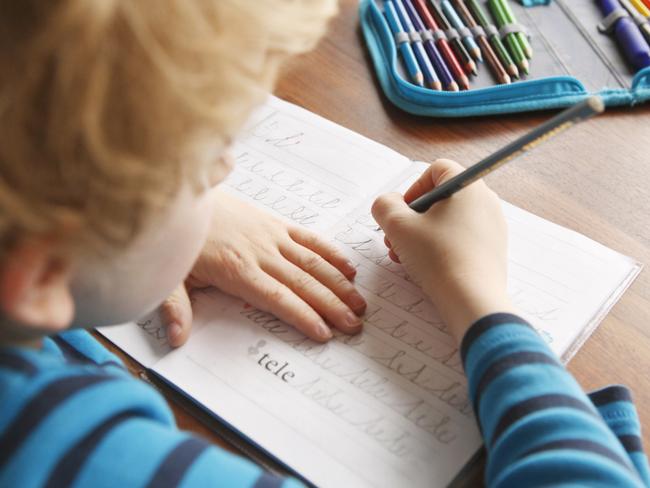Shake up to how students’ reading skills are assessed
A major shake-up to the curriculum could have an impact on your child’s daily reader.

Education
Don't miss out on the headlines from Education. Followed categories will be added to My News.
Junior students will be tested on their ability to read books using letters and sounds, rather than pictures, in a literacy assessment overhaul starting next year.
In curriculum changes that could have children taking home fewer picture books as daily readers, government primary schools will assess how year 1 pupils decode words and pronunciation differently to previous generations.
The shift away from “predictable texts” involves pupils learning to read by deciphering standard English words and understanding the sounds of alphabet letters.
Literacy consultant Narissa Leung said the research-backed shift to testing that required matching the sounds of spoken English with letters, known as phonics, would advance students’ reading and comprehension skills quicker.
“This specific assessment doesn’t include any images, so it’s all about ensuring that kids keep their eyes on the print,” Ms Leung said.
“It’s one of the skills that will lead to improved comprehension. This is how people learn to read best; it’s the most efficient method.

“One thing for parents is that it could possibly change how their students bring home readers. Schools are including decodable texts as a part of their instructional approach, so parents may find that texts look a little bit different to what they used to look like when they were going through school.”
Phonics is already part of the Victorian curriculum for preps, years 1 and 2, but the state government in this year’s budget allocated another $11.3m for primary schools to assess year 1 with specific phonics questions.
Twenty-three schools this year trialled the new testing requirement ahead of the 2023 statewide rollout.
Victoria’s major curriculum replacement is due in 2030, but the assessment change is in line with the national curriculum, which last week removed its focus on the “three-cueing system” that taught students to use visuals, meaning and syntax when learning to read.
Ms Leung said phonics worked alongside balanced literacy teaching approaches that used reading and writing in combination with speaking, listening and visuals to teach English.
Education Minister James Merlino said Victoria having the highest year 3 NAPLAN results in the country showed teaching phonics alongside other essential components including vocabulary and oral language was essential.
Bellaire Primary School in Geelong was one of the schools that trialled phonics testing for 280 prep and years 1 and 2 pupils.
Principal Suzanne Prendergast said pupils became more advanced in their spelling and reading during the program.




